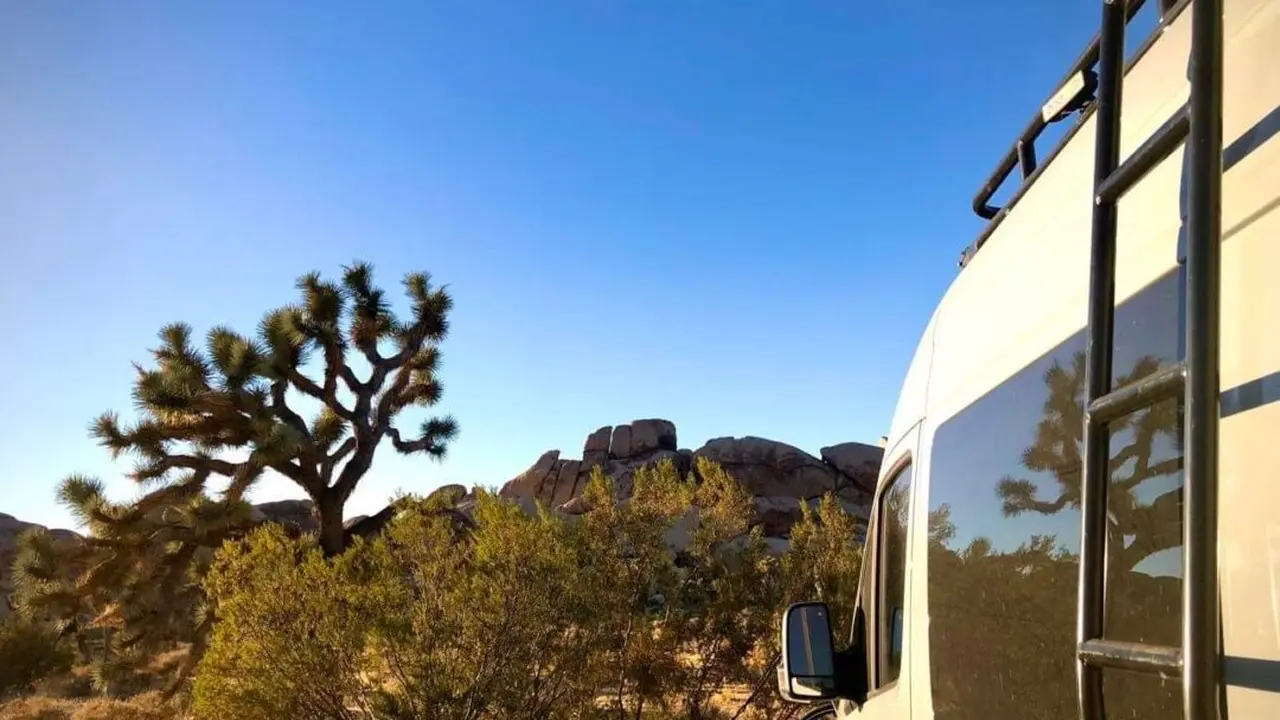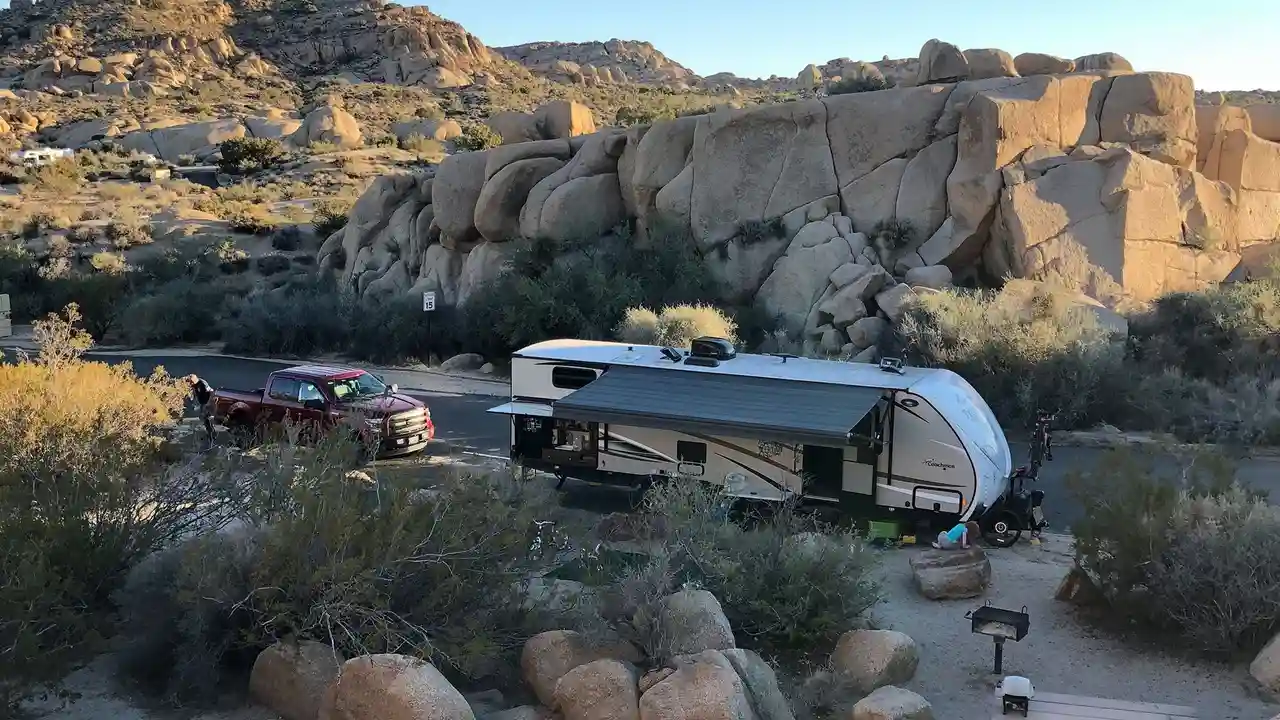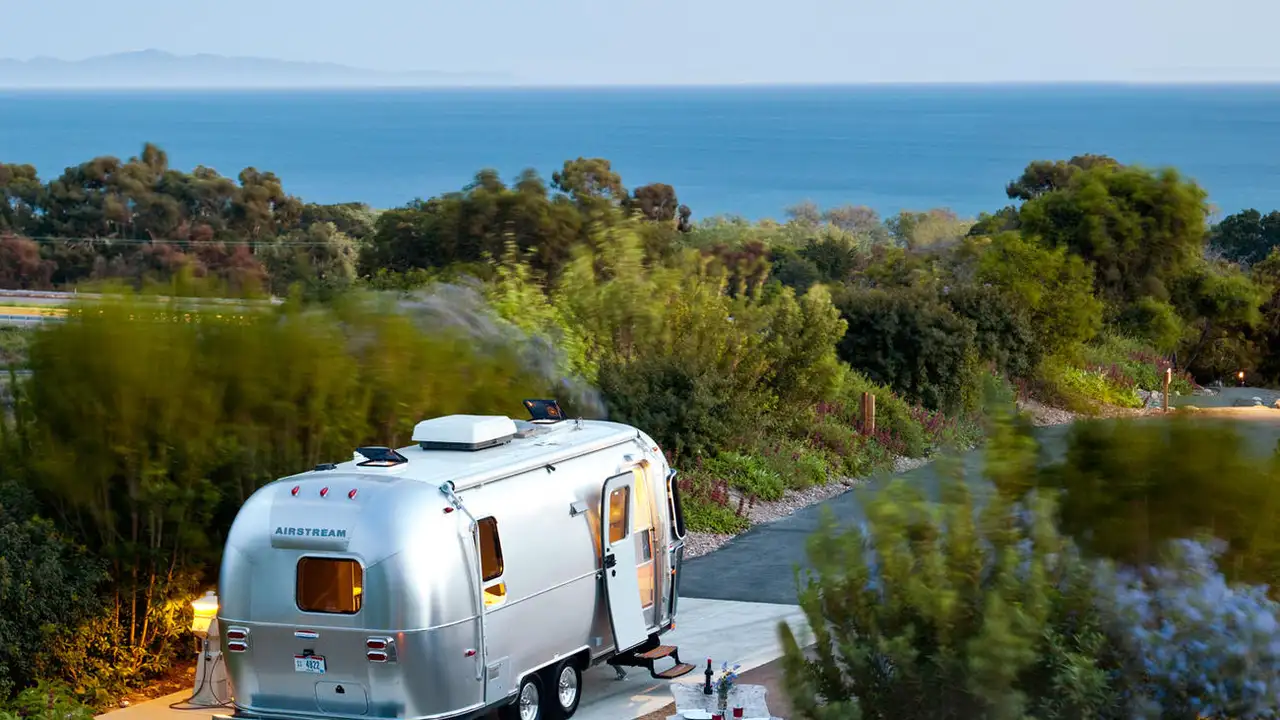Desert Wildlife Viewing for RV Campers

RV Camping in the Desert A Comprehensive Guide
The allure of the desert, with its vast landscapes, stunning sunsets, and unique wildlife, draws RV campers from all over the globe. But desert RV camping isn't just about parking your rig and enjoying the view. It's about preparation, understanding the environment, and respecting the delicate ecosystem. This guide provides a comprehensive look at RV camping in the desert, covering everything from choosing the right campsite to essential gear and safety tips.
Choosing the Perfect Desert RV Campsite Location
Selecting the right campsite is crucial for a successful desert RV camping trip. Consider these factors:
* **Accessibility:** Is the campsite easily accessible for your RV? Desert roads can be rough and unpaved, so ensure your RV is equipped to handle the terrain. Check road conditions before you go, especially after rain. * **Amenities:** Does the campsite offer amenities like water, electricity, and dump stations? These amenities can significantly enhance your comfort, especially for longer trips. * **Scenery:** What kind of scenery are you looking for? Do you prefer wide-open vistas, towering rock formations, or secluded canyons? Research different campsites to find one that matches your aesthetic preferences. * **Crowds:** How crowded is the campsite likely to be? Some popular desert destinations can get crowded, especially during peak season. Consider visiting during the off-season or choosing a less-known campsite to avoid the crowds. * **Regulations:** Are there any specific regulations or restrictions at the campsite? Some campsites may have restrictions on generator use, campfire size, or pet policies. Be sure to familiarize yourself with the rules before you arrive.Popular desert RV camping destinations include:
* **Joshua Tree National Park, California:** Known for its iconic Joshua trees and stunning rock formations. * **Death Valley National Park, California:** The hottest, driest, and lowest national park, offering otherworldly landscapes. * **Anza-Borrego Desert State Park, California:** California's largest state park, boasting diverse desert flora and fauna. * **Sedona, Arizona:** Famous for its red rock formations and spiritual energy. * **Moab, Utah:** A gateway to Arches and Canyonlands National Parks, offering incredible hiking and off-roading opportunities.Essential Gear for Desert RV Camping Preparedness
Desert RV camping requires specific gear to ensure your safety and comfort. Here's a checklist:
* **Water:** Bring plenty of water. The desert is a dry environment, and you'll need more water than you think. Aim for at least one gallon per person per day for drinking and cooking. * **Food:** Pack non-perishable food items that are easy to prepare. Consider dehydrated meals, canned goods, and energy bars. * **Sun Protection:** Protect yourself from the intense desert sun with sunscreen, hats, and sunglasses. Wear lightweight, long-sleeved clothing to cover your skin. * **First-Aid Kit:** A well-stocked first-aid kit is essential for any camping trip, but especially in the desert, where medical assistance may be far away. Include items like bandages, antiseptic wipes, pain relievers, and insect repellent. * **Navigation Tools:** Bring a map, compass, and GPS device. Cell phone service can be unreliable in the desert, so don't rely solely on your phone for navigation. * **Communication Device:** A satellite phone or personal locator beacon (PLB) can be invaluable in case of an emergency. * **Tools:** Pack essential tools like a shovel, axe, and multi-tool. These tools can be useful for setting up camp, repairing your RV, and dealing with unexpected situations. * **RV Leveling Blocks:** Uneven terrain is common in the desert. RV leveling blocks will help you level your RV for comfortable living. * **Generator:** If your campsite doesn't offer electricity, a generator can provide power for your appliances and electronics. Consider a solar generator for a more sustainable option.Staying Safe in the Desert Heat Hydration and Precautions
The desert heat can be dangerous, so it's crucial to take precautions to stay safe. Here are some tips:
* **Hydrate Regularly:** Drink plenty of water throughout the day, even if you don't feel thirsty. Avoid sugary drinks and alcohol, which can dehydrate you. * **Avoid Strenuous Activity During Peak Heat:** Limit strenuous activities to the cooler parts of the day, such as early morning or late evening. * **Seek Shade:** Find shade whenever possible. Park your RV in a shaded area or use an awning to create shade. * **Wear Appropriate Clothing:** Wear lightweight, loose-fitting clothing that covers your skin. Choose light-colored clothing to reflect sunlight. * **Recognize the Signs of Heatstroke:** Be aware of the signs of heatstroke, such as headache, dizziness, nausea, and confusion. If you suspect someone is experiencing heatstroke, seek medical attention immediately. * **Check Your RV's Cooling System:** Ensure your RV's air conditioning system is working properly before your trip. Consider bringing a portable fan for extra cooling. * **Cool Down Strategies:** Take cool showers or baths to lower your body temperature. Use a spray bottle to mist yourself with water.Desert Wildlife Encounters Respect and Safety
The desert is home to a variety of wildlife, including snakes, scorpions, spiders, and rodents. While these animals are fascinating to observe, it's important to respect their space and take precautions to avoid encounters.
* **Be Aware of Your Surroundings:** Watch where you're walking and avoid reaching into crevices or under rocks. * **Keep a Clean Campsite:** Store food properly and clean up any spills to avoid attracting animals. * **Never Feed Wildlife:** Feeding wildlife can make them dependent on humans and disrupt their natural behavior. * **Keep Pets on a Leash:** Keep your pets on a leash to prevent them from wandering off and encountering wildlife. * **Learn About Local Wildlife:** Familiarize yourself with the types of wildlife you might encounter in the area and learn how to react if you encounter them. * **Carry a Snake Bite Kit:** If you're camping in an area with venomous snakes, consider carrying a snake bite kit.Desert Navigation and Off-Roading Considerations
Navigating the desert can be challenging, especially if you're planning on doing any off-roading. Here are some tips:
* **Use a GPS Device:** A GPS device with topographic maps can be invaluable for navigating the desert. * **Carry a Map and Compass:** Don't rely solely on your GPS device. Bring a map and compass as a backup. * **Let Someone Know Your Plans:** Tell someone where you're going and when you expect to return. * **Travel with a Buddy:** If possible, travel with another vehicle. This can be helpful in case of a breakdown or other emergency. * **Check Your Vehicle:** Ensure your vehicle is in good working condition before your trip. Check the tires, brakes, and fluid levels. * **Carry Extra Fuel:** Bring extra fuel, as gas stations can be few and far between in the desert. * **Be Aware of Road Conditions:** Desert roads can be rough and unpaved. Drive slowly and carefully. * **Know Your Vehicle's Capabilities:** Don't attempt to drive on roads that are beyond your vehicle's capabilities. * **Carry Recovery Gear:** Bring recovery gear, such as a tow strap, shovel, and traction boards, in case you get stuck.Desert Stargazing Opportunities and Equipment
The desert offers some of the best stargazing opportunities in the world. The dark skies and clear air provide incredible views of the night sky.
* **Find a Dark Location:** Get away from city lights to find a dark location for stargazing. * **Use a Star Chart or App:** Use a star chart or app to identify constellations, planets, and other celestial objects. * **Bring Binoculars or a Telescope:** Binoculars or a telescope can enhance your stargazing experience. * **Dress Warmly:** Even in the desert, the nights can be cool. Dress warmly in layers. * **Use a Red Flashlight:** Use a red flashlight to preserve your night vision. * **Be Patient:** Allow your eyes to adjust to the darkness before you start stargazing.Recommended Products for Enhanced Desert RV Camping
Here are some recommended products to enhance your desert RV camping experience:
* **Goal Zero Yeti 1500X Portable Power Station:** This portable power station provides a reliable source of power for your appliances and electronics. It can be charged with solar panels, making it a sustainable option. * **Use Case:** Powering lights, charging devices, running small appliances. * **Product Comparison:** Compared to other portable power stations like the Jackery Explorer 1000, the Yeti 1500X offers a higher capacity and more output ports. * **Detailed Information:** 1500 watt-hours capacity, 2000 watt AC inverter, multiple USB and AC ports, priced around $2000. * **ARB 4x4 Accessories ARB44US Series II Awning with LED Light Strip:** This awning provides shade and protection from the sun, making your campsite more comfortable. The integrated LED light strip provides illumination at night. * **Use Case:** Creating a shaded outdoor living space. * **Product Comparison:** Compared to other awnings like the Carefree Freedom Awning, the ARB awning is more rugged and durable, designed for off-road use. * **Detailed Information:** Heavy-duty canvas, aluminum frame, integrated LED light strip, priced around $400. * **MaxTrax MKII Recovery Boards:** These recovery boards can help you get unstuck if your RV gets bogged down in sand or mud. * **Use Case:** Recovering a vehicle from sand, mud, or snow. * **Product Comparison:** Compared to other recovery boards like the Smittybilt Element Ramps, the MaxTrax boards are more durable and offer better traction. * **Detailed Information:** Made from high-strength nylon, aggressive tread pattern, stackable design, priced around $300 per pair. * **Dometic CFX3 55IM Portable Refrigerator/Freezer:** This portable refrigerator/freezer keeps your food and drinks cold, even in hot weather. * **Use Case:** Keeping food and drinks cold on the road. * **Product Comparison:** Compared to other portable refrigerators like the Engel MT45F-U1, the Dometic CFX3 offers more advanced features like app control and a built-in ice maker. * **Detailed Information:** 55-liter capacity, variable temperature control, app connectivity, built-in ice maker, priced around $1000. * **Garmin Overlander GPS Navigator:** This GPS navigator is designed for off-road adventures, with preloaded topographic maps and points of interest. * **Use Case:** Navigating off-road trails and finding campsites. * **Product Comparison:** Compared to other GPS navigators like the Magellan TRX7, the Garmin Overlander offers a larger screen and more advanced features like built-in Wi-Fi and Bluetooth. * **Detailed Information:** 7-inch touchscreen display, preloaded topographic maps, points of interest, built-in Wi-Fi and Bluetooth, priced around $700.Desert Camping Etiquette Leave No Trace Principles
It's important to practice Leave No Trace principles when camping in the desert to minimize your impact on the environment.
* **Plan Ahead and Prepare:** Research your destination and pack appropriately. * **Travel and Camp on Durable Surfaces:** Stay on established trails and campsites. * **Dispose of Waste Properly:** Pack out everything you pack in. * **Leave What You Find:** Leave natural objects as you find them. * **Minimize Campfire Impacts:** Use a portable stove for cooking and avoid building campfires. * **Respect Wildlife:** Observe wildlife from a distance and avoid disturbing their habitat. * **Be Considerate of Other Visitors:** Respect other campers and avoid making excessive noise.Conclusion A Journey of Desert Discovery
Desert RV camping offers a unique and rewarding experience. By following these tips and guidelines, you can have a safe, comfortable, and memorable adventure. Remember to respect the environment, be prepared for the challenges, and enjoy the beauty of the desert.
:max_bytes(150000):strip_icc()/277019-baked-pork-chops-with-cream-of-mushroom-soup-DDMFS-beauty-4x3-BG-7505-5762b731cf30447d9cbbbbbf387beafa.jpg)





